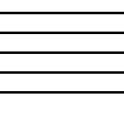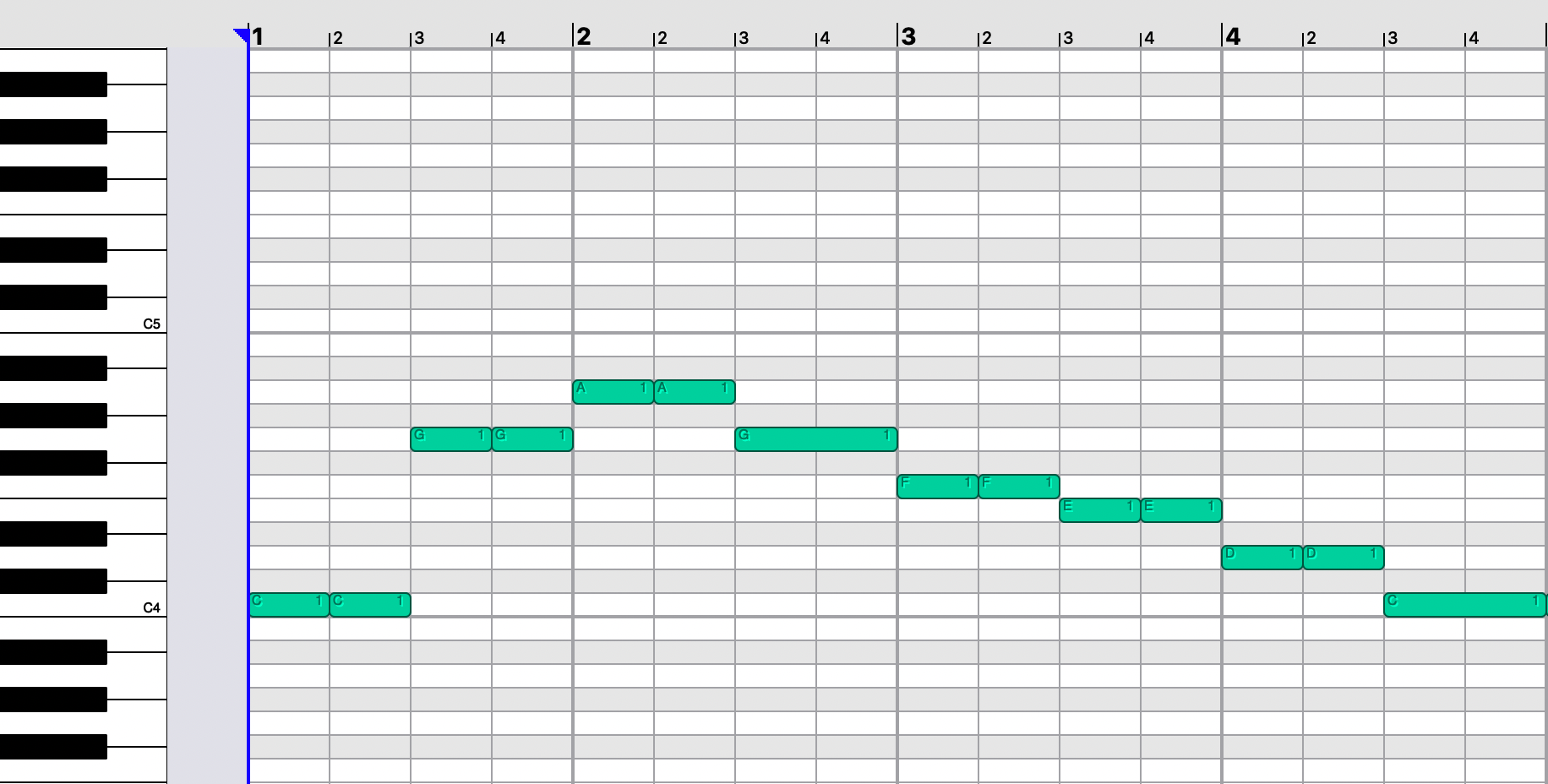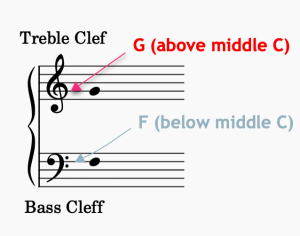Notation Basics: Staff & Page Layout
Music notation provides a means to create and manipulate musical sound via visual representations. The starting point is the staff




As various symbols are placed on a staff, they can represent all aspects of how the music will sound. This includes the following elements of music:
- pitch (frequency)
- rhythm (duration)
- dynamics (volume)
- timbre (instrument)
- articulation (style)
Here is a short video of an orchestra excerpt with the music notation highlighted. Don’t worry if you don’t understand every notation on the page – just try and get a feel of the visual look with the audio sound…
Examples
You have probably worked with software that presents music in “piano roll” mode… MuseScore 3.x can not only show content as traditional notation, but also as a piano roll.

In the piano roll notation, the vertical lines helps to visually separate the pitches. The “ruler” at the top represents that there are 4 measures (or bars) with each measure having 4 beats.

In the traditional notation, there are only vertical lines for the end of each measure since each note has a ‘stem’ which helps make the music a bit easier to read. Here’s the opening of Twinkle, Twinkle Little Star notated in non-traditional ways to demonstrate how stems and barlines helps the reading of music.

- Note heads only
- Note heads with stems
- Note heads, stems, and barlines
- Final Version with treble clef (indicates the octave of pitches on the staff) and time signature (the 4/4 which means 4 beats per bar [top number] with the quarter note [bottom number] as the beat.
Key Takeaways
Melody: the vertical position of a note determines the pitch (the higher the note is on the staff, the higher the sound).
Rhythm: the duration of a note is determined by it’s shape (whole note, half note, quarter note, eighth note, sixteenth note). Notation software will space the notes horizontally in their best position.
Measure (Bar): notes on a staff are separated by barlines which help to group the music based on the number of beats/pulses per measure.
Time Signature: a “fraction” with the bottom number indicating what rhythm value is a single beat [1 = whole note, 2 = half note, 4 = quarter note, 8 = eighth note] and the top number the number of beats per measure.
Clef: the first symbol on any staff that indicates the relative range of all pitches. Clefs are named after voice parts: treble clef, alto clef, tenor clef, and bass clef]

Horizontal lines on which pitch and rhythmic notation is written. The standard staff consists of 5 lines.

